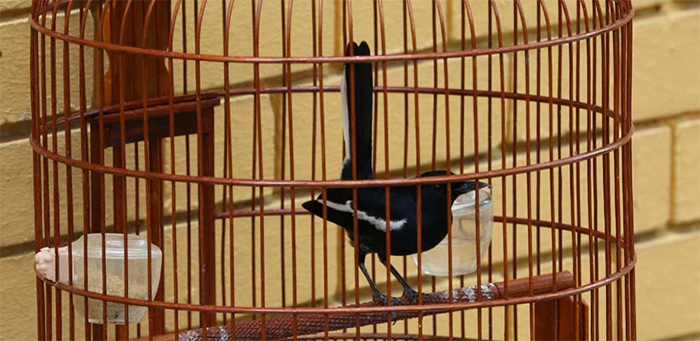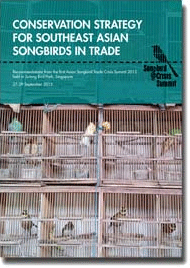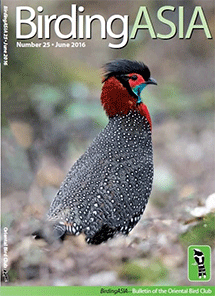Experts devise plan to save Asia’s songbirds

Experts from wildlife conservation and research organisations gathered at the second Asian Songbird Trade Crisis Summit have devised a comprehensive strategy to protect the region’s songbirds from the impacts of excessive trapping for the cage bird trade.
Organised by Wildlife Reserves Singapore and TRAFFIC, the three day summit from 19th to 21st February held at Jurong Bird Park in Singapore was a platform to launch the Conservation Strategy for Southeast Asian Songbirds in Trade (PDF, 3 MB).
The Strategy’s recommendations included greater education and community outreach, establishing and expanding conservation breeding colonies such as those currently found at Jurong Bird Park, and further research into the taxonomy and wild populations of species of concern, such as the Rufous-fronted Laughingthrush Garrulax rufifrons, a formerly common species restricted to the mountains of western and central Java whose population has been decimated by trapping.
Fifty-four representatives from a range of conservation non-governmental organisations, government agencies, the eco-tourism industry, academic and zoological institutions gathered to review progress and refine plans aimed at curbing such over-exploitation of songbirds in Asia, which has seen a number of formerly common species decline across the region.
Dr Cheng Wen-Haur, Deputy Chief Executive Officer and Chief Life Sciences Officer, Wildlife Reserves Singapore, said, “The unsustainable songbird trade has become a major threat to the survival of Southeast Asia songbirds and has given rise to the eerie ‘silent forest syndrome’. Concerted efforts as spelled out in the Songbird Conservation Strategy is essential if we were to have any chance of averting this extinction crisis facing one the most wonderful groups of creatures on earth.”
In September 2015 the first Asian Songbird Trade Crisis Summit was held to begin the process of co-ordinating a response to the alarming numbers of songbirds trapped from the wild for domestic and international trade in Southeast Asia.
The second Summit began with participants sharing updates on developments since 2015, followed by presentations on potential opportunities including campaigns by zoos and behaviour change strategies to reduce the unsustainable demand for wild birds using bottom-up approaches.
Other priority action areas included improving knowledge on wild populations, supporting law enforcement successes along the trade chain and developing a plan for the rehabilitation and release of confiscated birds.
“Huge open markets selling millions of birds each year persist throughout the region, and facilitate unsustainable and often illegal trade,” said Dr Chris R. Shepherd, Regional Director of TRAFFIC in Southeast Asia. “Shutting these markets down is essential, if efforts to save some species from extinction is going to be possible.”
A framework for co-ordination of actions across the diverse group was developed during the Summit, to facilitate co-operation and monitor progress in saving Asia’s songbirds.
“It’s heartening to see the truly international concern and support to help protect Asia’s bird life, but ultimately change must come from within—it’s our region’s birds that are being decimated and it’s in the hearts of Asian people to protect them,” said Ria Saryanthi, Head of Communication and Institutional Development for Burung Indonesia.
TRAFFIC
1 March 2017
Share this story







